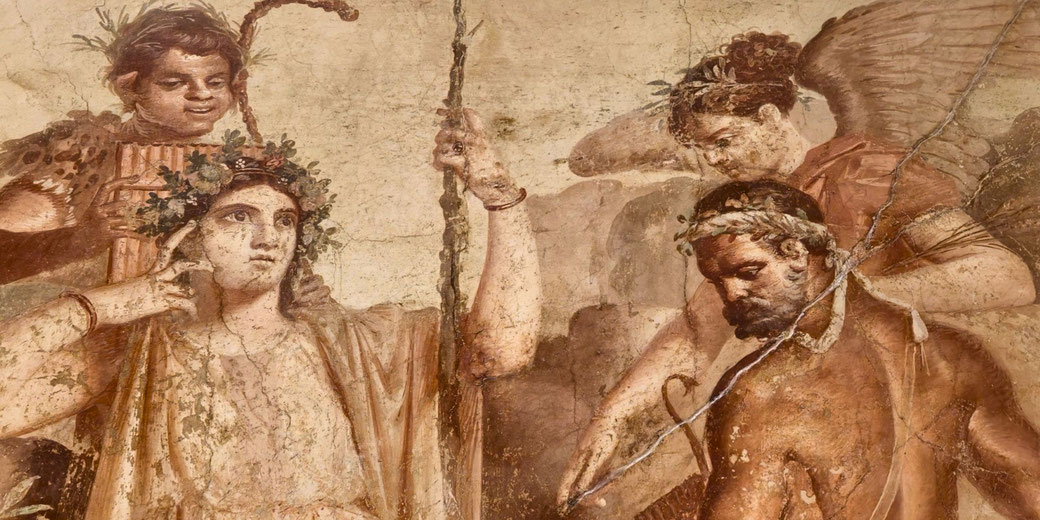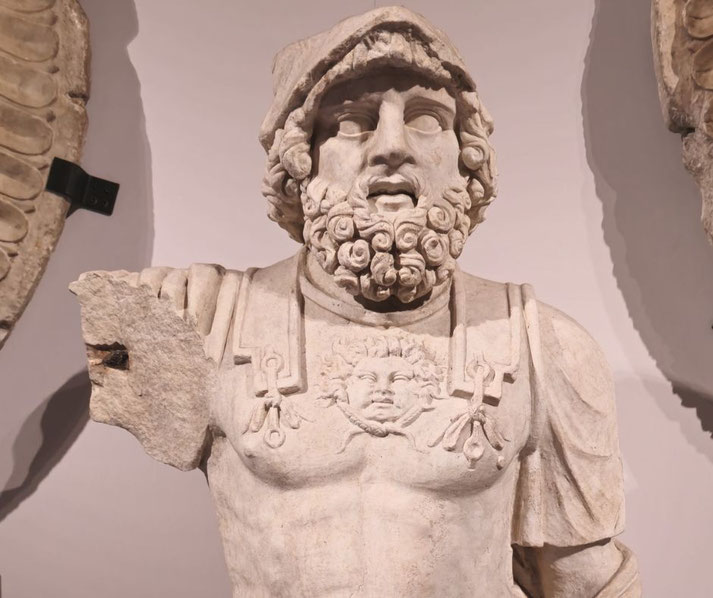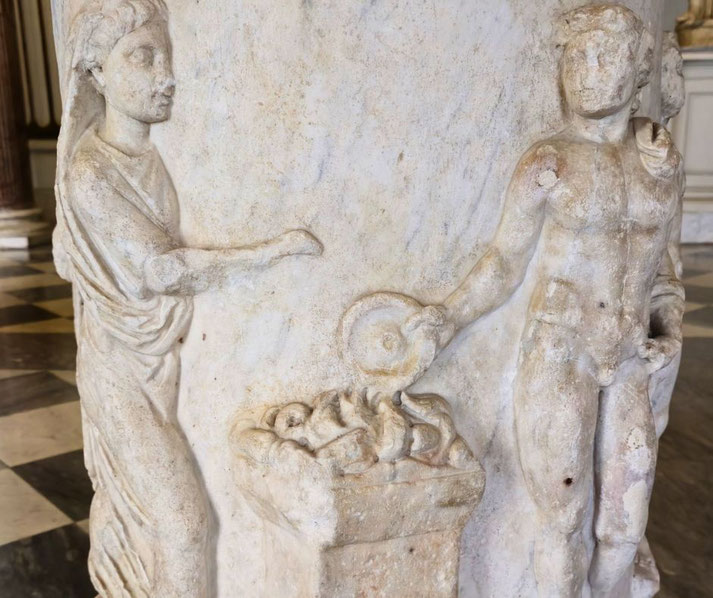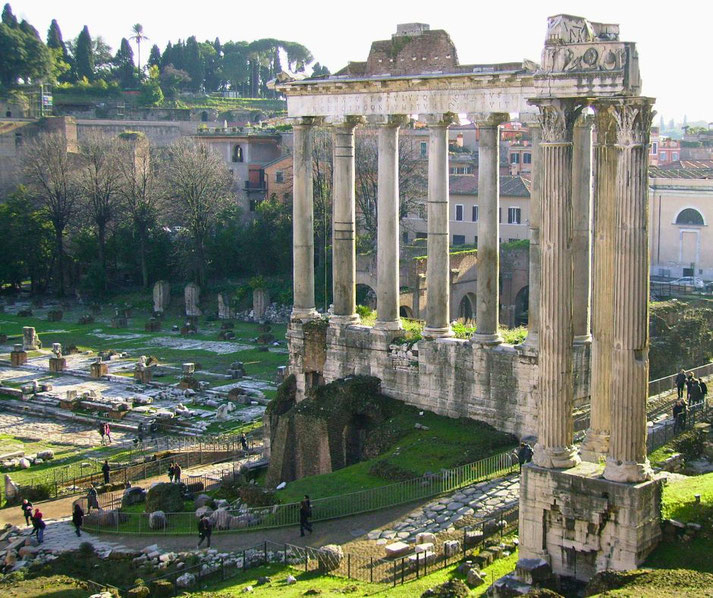Roman gods, goddesses, and religious beliefs

Picture a world where divine beings influenced every aspect of life, from the success of harvests to the outcomes of battles.
In Ancient Rome, religion was a central part of their society. The people believed that correct worship could shape the destinies of individuals and the empire itself.
As a result, Roman citizens worshipped a pantheon of gods and goddesses, each embodying specific natural forces and virtues.
Today, their devotion was still evident in the number of grand temples that dot the former lands of the Roman Empire.
Why Roman religion is strange to us
In Ancient Rome, the concept of religion (or religio in Latin) was a series of practices of rituals, wich reflected a sense of duty and respect toward the gods.
To them, the concept of religio differed significantly from modern concepts of religion in several key ways.
The Romans focused on the precise execution of rituals to maintain a harmonious relationship with the gods.
Therefore, they believed that when rituals were meticulously performed, they could ensure the favor of the gods, leading to the success and longevity of their civilization.
Therefore, religious festivals, sacrifices, and augury (the interpretation of omens) played important roles in maintaining the survival of Rome.
As a result, Roman religion was less about personal belief and more about communal duty and adherence to tradition.
So, Romans developed the idea of pietas, or piety, which emphasized loyalty and devotion to the gods, one's family, and the state.
A person demonstrating pietas showed a strong sense of duty and reverence, fulfilling their religious and moral obligations.
This virtue was central to Roman identity, with heroes and leaders often celebrated for their pietas in public.
The earliest beliefs
The earliest form of Roman religion was animistic in nature, with a focus on the spirits that inhabited the natural world.
Also, early Roman religion was heavily influenced by the Etruscans, who lived in northern Italy and had a well-developed religious system.
At its core, the Romans worshipped specific gods and spirits associated with particular places and functions.
Some of the most famous and important early worship is reflected in the cults of the lares and penates, which were household gods that protected the family and its possessions.
The Romans also worshipped a wide range of gods and goddesses associated with agriculture, fertility, and the seasons, such as Ceres, the goddess of grain, and Saturn, the god of sowing and harvest.

Expanding Roman religious beliefs
As Rome grew in power and prestige, its religious practices became more elaborate and formalized.
One of the most distinctive features of Ancient Roman religion was its syncretic character, which meant that it incorporated elements from a wide variety of other religious traditions.
This was partly due to the fact that the Romans were a highly cosmopolitan people, with a vast empire that encompassed many different cultures and religions.
As they conquered new territories, they often assimilated the local deities into their own pantheon.
This syncretism allowed Roman religion to unify a vast and culturally varied population under a common spiritual framework.
By the time of the Roman Empire, there was also an Imperial Cult, which involved the worship of the emperor as a god.
This practice that began with Augustus and became an important aspect of Roman state religion.
Most famous Roman gods and goddesses
Ancient Roman religion had a rich pantheon of gods and goddesses, and there were many deities that were widely worshipped and revered.
Some of the most famous Roman gods and goddesses include:
Jupiter - the king of the gods, associated with thunder and lightning.
Juno - the queen of the gods and the goddess of marriage and childbirth.
Minerva - the goddess of wisdom, medicine, and crafts.
Venus - the goddess of love, beauty, and fertility.
Mars - the god of war.
Neptune - the god of the sea and freshwater.
Apollo - the god of music, poetry, and prophecy.
Diana - the goddess of the hunt and the moon.
Mercury - the god of commerce, travelers, and thieves.

Priests and priestesses in Ancient Rome
In Ancient Roman religion, priests played a crucial role in the maintenance and interpretation of the various cults and practices associated with the gods and goddesses.
The role of the priest varied depending on the specific cult, but in general, their duties included conducting religious ceremonies, making offerings and sacrifices, and interpreting omens and signs from the gods.
The chief priest of Roman religion was called the Pontifex Maximus. This role that became increasingly politicized over time, with notable holders including Julius Caesar.
Priests were often drawn from the upper echelons of Roman society and were highly respected for their knowledge and expertise.
They received training in the specific rituals and practices of their cult and were expected to maintain a high level of moral and ethical conduct.
Women could also become priestesses, such as the famous Vestal Virgins, who maintained the sacred fire in the Temple of Vesta.
What happened in Roman temples?
Temples were also an important part of Ancient Roman religion, serving as the physical manifestation of the cult and the site of religious ceremonies and festivals.
They were usually dedicated to a specific deity or group of deities and were adorned with ornate decorations and offerings from worshippers.
Visiting a temple was an important part of Roman religious life, and many people would make offerings or sacrifices to the gods in the hopes of receiving blessings or favors.
Temples also served as centers of civic life, where people could gather for social and political events as well as religious ones.

Major Roman festivals
Ancient Roman religion had a calendar filled with various religious festivals and celebrations throughout the year.
These festivals were a crucial part of Roman daily life, bringing together people from all classes to participate in rituals that reinforced social bonds and affirmed the authority of the state.
Some of the most famous Roman religious festivals include:
Saturnalia - a festival held in honor of the god Saturn, usually celebrated in December. It was a time of feasting, gift-giving, and general merrymaking.
Lupercalia - a festival held in mid-February in honor of the god Lupercus (or some sources say Faunus), associated with fertility and purification. It involved the sacrifice of goats and the running of young men through the streets while whipping women with strips of goat skin.
Vestalia - a festival held in June in honor of the goddess Vesta, the goddess of the hearth and home. It involved the purification of Vesta's temple and the offering of food and drink to the goddess.
Floralia - a festival held in late April in honor of the goddess Flora, the goddess of flowers and fertility. It involved dancing, singing, and the offering of flowers to the goddess.
Parilia - a festival held in April in honor of the god Pales, the god of shepherds and flocks. It was a time of purification and renewal and involved the offering of milk and the burning of straw.
Ludi Romani - a series of games held in honor of the god Jupiter, usually held in September. They were a time of great spectacle and entertainment, featuring chariot races, gladiatorial contests, and theatrical performances.

What do you need help with?
Download ready-to-use digital learning resources
Copyright © History Skills 2014-2025.
Contact via email
With the exception of links to external sites, some historical sources and extracts from specific publications, all content on this website is copyrighted by History Skills. This content may not be copied, republished or redistributed without written permission from the website creator. Please use the Contact page to obtain relevant permission.





